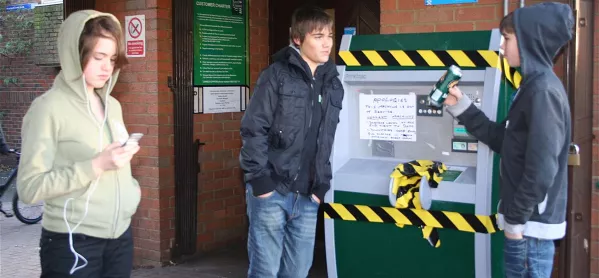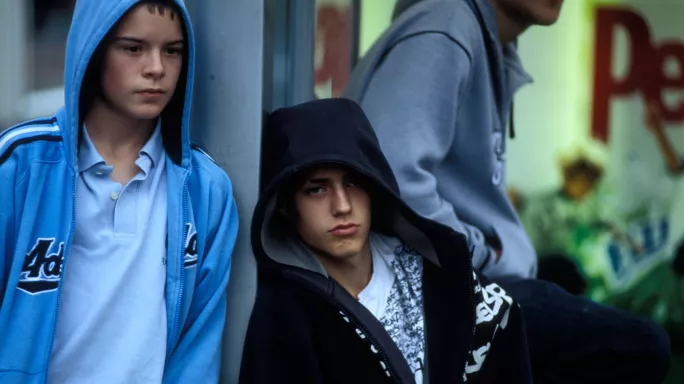- Home
- Safeguarding: is your school tackling ‘county lines’?
Safeguarding: is your school tackling ‘county lines’?

In 2018, the children’s commissioner for England warned that around 50,000 young people were known to be affected by “county lines” - drug gangs expanding from big cities into smaller towns, often exploiting children and vulnerable people to sell drugs - although the actual figure is thought to be considerably higher.
It’s a constant game of cat and mouse: the gangs exploit gaps between services and change their tactics faster than schools and other agencies can keep up.
Quick read: ‘I was a high-achieving pupil - and a gang member’
Quick listen: What every teacher needs to know about the impact of trauma
Want to know more? Why schools should teach emotional intelligence
This means we face significant challenges in identifying potential victims before they become ensnared by the gangs. So what do teachers need to know about this troubling trend?
County lines: look beyond stereotypes
It is easy to make sweeping judgements about which students may be vulnerable to gang involvement. The stereotype is of an older teenage boy, often from a black or minority ethnic background, with a troubled home life and a history of problems with the police. He’s probably been excluded from school and is attending a pupil-referral unit or is in the care system.
However, it is children who fall outside of those stereotypes who are increasingly at risk of exploitation. In the recent report Counting Lives: responding to children who are criminally exploited, the Children’s Society explains that “as professionals become more responsive to identifying children, criminals adapt their tactics to make it less possible for children to be identified”.
Both the Working Together to Safeguard Children and Keeping Children Safe in Education documents use the term “contextual safeguarding” to highlight the need to consider the individual needs and vulnerabilities of each child where wider environmental factors are a threat to their welfare.

While traditionally at-risk students remain more vulnerable to exploitation, we have to also consider children who have stable, supportive families and a good relationship with school. Girls are likely to be under-represented in statistics because they don’t fit the traditional gang profile.
Black students are more likely to face stop-and-search by police, meaning they are likely to be overrepresented when profiling potential victims.
Children without any connection to crime are ideal for criminal groups because they are less likely to attract police attention. Those with stable home lives can still be targets through emotional difficulties with peers and families.
Schools have been aware for some time that children with special educational needs are high-risk, but there are increasing concerns about children with undiagnosed learning difficulties who struggle academically at school.
Some children are more at risk because they face discrimination or because they lack protective factors, others are vulnerable simply for being children, more easily manipulated than adults, with an unmet need that can be exploited. The National Crime Agency’s intelligence assessment County Lines Drug Supply, Vulnerability and Harm 2018 comments that “any vulnerability is a potential target”.
How does it happen?
Children are typically approached, either physically or online, long before they are ever used by gangs. Although the age at greatest risk of county lines involvement is 15 to 17, the Children’s Society says there is evidence of children as young as 7 being targeted.
Years can be spent simply observing a target to find out how they are vulnerable and to ascertain their potential use in the future. Then an exploiter will build trust and develop a relationship with a child by listening and becoming a friend. They will show the glamour of their lifestyle without sharing the criminal aspect of it.
The relationship will be deepened with gifts and rewards while testing loyalties through simple tasks, such a delivering an innocuous package or message to another gang member.
There are difficulties for schools in trying to spot signs of county lines exploitation. Attendance used to be the main flag for potential involvement, but now a trend towards “shift work” means that children may only miss school for short periods to avoid raising suspicions.
The Children’s Society highlights the issue of children forcing schools to send them home - through tactics such as not wearing the correct uniform - to allow them to complete tasks for gangs. Other reports tell of children misbehaving in school to force external exclusions, allowing them to be available for drug-running.
There is a growing need to consider how we uncover the children being groomed, years before they become actively involved in gangs.
So what can schools do? To safeguard students effectively, they need to:
- Think the unthinkable, not assume that a child is safe just because they have a stable home life and an affluent background.
- Look for changes over time through deteriorating grades, attendance and escalating behaviour problems.
- Monitor attendance by looking for children who are repeatedly absent for small parts of the day or always late.
- Be on the lookout for children who have surprisingly expensive phones, jewellery and personal items or large amounts of cash.
- Avoid sending older students home during the school day (if they arrive in the wrong uniform, for example.)
- Explicitly teach children about the dangers of exploitation through age-appropriate lessons and assemblies.
- Shift the safeguarding message away from a general “stranger danger” towards explaining the risk from older people whom children think are their friends.
- Provide ways for students to anonymously report concerns to staff.
- Ensure that all safeguarding concerns raised are put in writing and evaluated by the school’s designated safeguarding officer, looking for patterns over time.
- Plan regular staff meetings with a safeguarding focus.
- Educate parents by running information meetings or sending home the parent guidance from the Children Society’s website.
Helly Douglas is a primary teacher and freelance writer. She tweets @hellydouglas
Keep reading for just £1 per month
You've reached your limit of free articles this month. Subscribe for £1 per month for three months and get:
- Unlimited access to all Tes magazine content
- Exclusive subscriber-only stories
- Award-winning email newsletters
